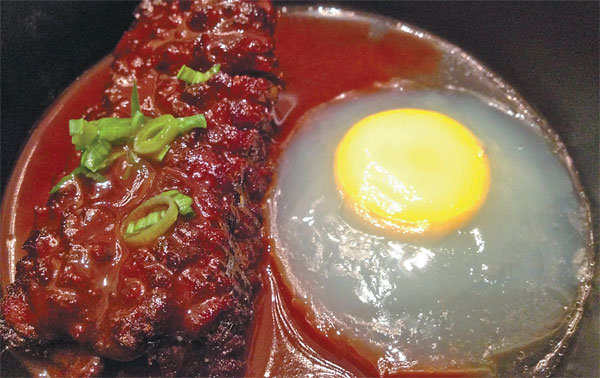An ode to good food
|
Finger-sized river eels are filleted and beaten with a rolling pin to tenderize the meat. They are braised in a sweet and savory sauce. |
What caught my eye were tiny transparent crustaceans, which Meng says are the white lake or river shrimps, something else my colleagues from Jiangsu had spoken of with great longing.
It was at the vegetable section that Nanjing showed off its best produce. There was such a lot of green that it made me misty-eyed thinking of the pale winter cabbages and radishes of Beijing.
 |
| Richesse Chinoise |
Among the green, though, were the lighter-colored water Artemisia, piled high like very slender asparagus everywhere. Meng tells me those with the red-tinged roots are wild, and they cost about twice as much as the cultivated vegetables.
Back at the restaurant, Meng and Chinese master chef Ken Luan set to work turning our day's marketing into an exceptional lunch.
First up was a bowl of clear broth in which sat a giant meatball. It wore a mane of shredded beancurd skin, and I realized I was looking at the famous "lion's head".
This is nothing like the red-braised meatballs north of the Yangtze, deep-fried and brown-braised and shrouded with a sticky brown sauce, heavily scented with star anise.
The Nanjing version is light as Tinkerbelle's touch, melt-in-the -mouth tender and held together by kitchen magic. It is also a showcase of the chef's skill. Lean meat with just a modicum of fat is hand-minced and then repeatedly slapped against the side of a bowl until it binds.
The meatball has the texture of tofu and is white with the natural protein released in the cooking.

















